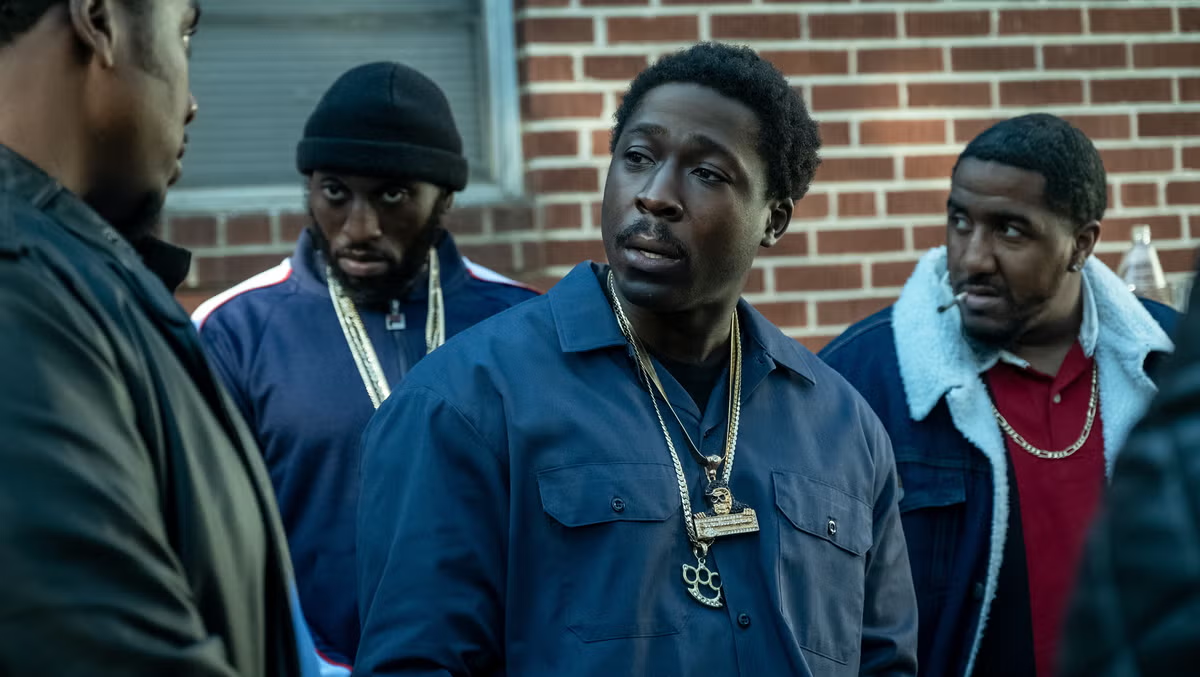In the ever-growing landscape of crime dramas, few shows have managed to capture the gritty underbelly of American street life like BMF (Black Mafia Family). Produced by Curtis “50 Cent” Jackson and aired on Starz, the series chronicles the rise of Demetrius “Big Meech” Flenory and Terry “Southwest T” Flenory—two brothers from Detroit who built one of the most powerful drug empires in the United States. While the Flenory brothers provide the narrative backbone of BMF, it’s the show’s chaotic villain, Lamar Silas, who often steals the spotlight.
This article delves into the character of Lamar BMF in BMF, examining his origins, his psychological complexity, and his cultural impact, while separating fact from fiction in one of the most talked-about antagonists in recent TV history.
Who Is Lamar in BMF?
Lamar BMF, portrayed by British actor Eric Kofi-Abrefa, is a volatile and menacing figure in BMF. Introduced in the show’s first season, Lamar is a recently released psychiatric patient and former gang member who immediately resumes his reign of terror on the streets of Detroit. He’s a blend of ferocity, unpredictability, and disturbing charisma—a man who appears to thrive on mayhem and manipulation.
Lamar is fictional, but he’s heavily inspired by a real-life figure: Layton Simon. In Detroit street lore, Layton was known as a feared enforcer and a wild card during the time the Flenory brothers were making their rise in the drug world. While the show dramatizes and exaggerates elements for dramatic effect, Simon’s influence on the streets was very real.
A Different Kind of Villain
What sets Lamar apart from traditional TV villains is his blend of emotional depth and outright savagery. He’s not simply a thug or a power-hungry gangster. Lamar is a deeply disturbed man, possibly suffering from untreated mental illness, who shifts between moments of vulnerability and terrifying violence. His relationships—particularly with Monique and her daughter Zoe—reveal a man capable of affection, though often twisted by his possessiveness and rage.
Eric Kofi-Abrefa’s portrayal of Lamar is intense and unforgettable. With wild eyes and a snarling voice, he gives Lamar a magnetic presence that makes viewers anxious whenever he’s on screen. Whether he’s humming to himself before committing a heinous act or talking to a child like he’s the neighborhood uncle, Lamar keeps the audience guessing—and often, horrified.
The Cultural Impact
Lamar has become a breakout character from BMF, dominating memes, social media discussions, and fan theories. His unpredictability has led to comparisons with classic TV villains like Omar Little (The Wire) or Tommy Egan (Power), but with an added layer of psychological instability.
In a series grounded in crime, ambition, and family dynamics, Lamar is the wildcard—a human hurricane disrupting plans and alliances wherever he goes. He’s not just an obstacle for Meech and Terry; he’s a symbol of the uncontrollable elements in the streets, the ghosts of past violence that resurface when least expected.
Fans have created everything from Lamar-themed TikToks to parody videos of his infamous scenes (like the one where he sings “You Can’t Stop the Rain”). Yet for all the jokes, there’s an undercurrent of respect for how chillingly real Lamar feels—especially to those familiar with the chaotic energy of Detroit’s street legends.
Fact vs. Fiction: The Real Layton Simon
The man who partly inspired Lamar, Layton Simon, has since emerged to clarify which parts of BMF reflect reality and which are pure dramatization. According to interviews, Simon did know the Flenorys and was active in Detroit during that era, but he insists he wasn’t the homicidal maniac depicted on TV.
Simon, now older and reportedly reformed, has spoken publicly about the show’s creative liberties. He notes that while he did clash with others on the streets, his story was shaped by survival, not senseless violence. Layton also points out that the character of Lamar was designed to heighten the drama and give viewers a clear antagonist. In truth, the power dynamics in Detroit were far more nuanced and political than a single villain-versus-hero narrative allows.
This raises important questions about responsibility in storytelling—especially when fictionalizing real people who are still alive. While BMF makes no secret of blending truth with fiction, viewers unfamiliar with the history may walk away with a skewed version of events.
The Psychology of Lamar
From a psychological standpoint, Lamar is fascinating. He appears to suffer from a combination of narcissistic rage, psychosis, and perhaps post-traumatic stress. His violent outbursts, hallucinations, and inability to control impulses suggest deep-rooted trauma, possibly exacerbated by his time in a psychiatric facility.
Yet the show resists making Lamar a one-note “crazy” character. He’s intelligent, manipulative, and, at times, even strategic. His vendetta against the 50 Boyz (Meech and Terry’s crew) isn’t just personal—it’s tactical. He wants control, respect, and revenge, all wrapped in a delusional sense of entitlement.
In this way, Lamar represents a broader issue in communities plagued by crime and underfunded mental health systems: how untreated psychological disorders can fuel cycles of violence. The show doesn’t offer solutions, but it does force viewers to confront the uncomfortable reality that some people are both victims and perpetrators of their environment.
Death (or Not?) and Legacy
Lamar’s apparent death in BMF Season 2 stunned fans, but in the world of TV dramas—especially those under 50 Cent’s production umbrella—deaths aren’t always permanent. Whether or not Lamar returns in future seasons, his legacy within the show is cemented.
He was the storm that forced Meech and Terry to accelerate their evolution from street hustlers into organized, calculated empire-builders. His chaos was the catalyst for their order.
Moreover, Lamar’s popularity speaks to how compelling villains can be when written with depth. Audiences may despise his actions, but they’re glued to the screen when he appears.
Final Thoughts: More Than Just a Villain
Lamar Silas is a case study in how a fictional character, even when inspired by real life, can transcend the boundaries of narrative to become a pop culture phenomenon. In a show that thrives on authenticity, grit, and ambition, Lamar offers a dose of pure, unfiltered madness.
Yet beneath the surface, he’s more than just a psychopath. He’s a reflection of systemic failures, unresolved trauma, and the collateral damage left in the wake of street wars. His story is not just one of violence, but of isolation, rejection, and an unyielding need for power in a world that constantly strips people of it.
Whether you view him as a tragic figure or a monstrous villain, one thing is clear: Lamar Silas is unforgettable. And in the ever-expanding universe of BMF, his shadow looms large—even from the grave.




